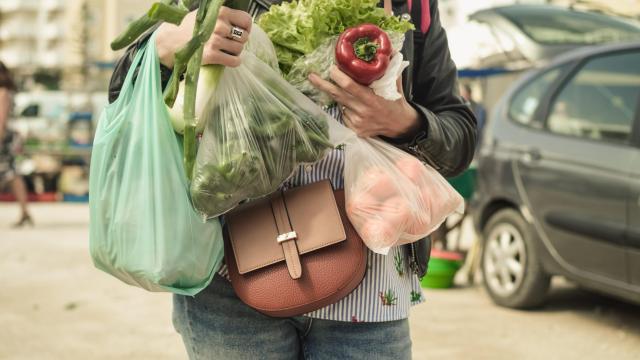In America’s “linear economy,” one where products are designed to be used once before being discarded, getting to “zero-waste” is nearly impossible without dedicating your life to the cause. It’s an especially tricky proposition for busy parents who don’t have time to make bespoke yogurt for picky children who will just protest that it’s “weird.”
So, let’s manage expectations by first dubbing these tips “low-waste” or better yet, “lower waste.” We’re not going to successfully change all of our consumption habits overnight and generate one tiny wastebasket of trash for the week (especially when you live with small gremlins who need goldfish crackers on-demand).
But while it may seem far-fetched at first glance, there are some relatively painless ways you can decrease waste while raising little ones.
Save the glitter for school
One of our personal favourites, the suggestion to ban “fun” art projects from your house is a breath of fresh air. (I haven’t done this personally, but took vicarious relief in others’ explanations of said technique.) Consider a policy where art projects involving glitter, scented stickers, pipe cleaners, felt balls, and confetti are left for school or friends’ houses. You can still let your kid run wild with scissors, paper (more on that below), and objects found in nature, like leaves and pine cones. Just imagine un-glittered floors and extra cabinet space.
Recycle paper
This seems obvious but: Don’t throw out paper that’s only been used on one side. Whenever the kids come home with mounds of completed schoolwork, save what you must and keep the rest in a scrap paper drawer for use throughout the year. (Same goes for those onerous one-sided printouts from your office.)
Purchase experiences, not things
Does your child actually need another Twisty Pet or 327-piece Lego set? Instead of the usual influx of toys on special occasions, consider buying them a membership to a local museum, aquarium, or amusement park. As they get older, the experiences can shift to concerts and sports. (Note: it’s helpful to pass along a request to family members and friends to do the same.)
Use re-usable plastic bags and containers
Using small plastic containers for your kids’ daily sandwiches and snacks (instead of a fresh Ziploc) can go a long way in reducing your plastic bag waste. After hauling around apple slices, pretzels, or Cheez-its, all they need is a quick rinse at the end of the day.
Make your own cards and wrapping paper
Instead of spending $7 on kids’ birthday cards that have a life span of about ten seconds, help your wallet and our landfills by having your child make homemade ones. There’s really nothing cuter or more appropriate for a five-year-old’s celebration than a child’s lopsided drawing of a birthday cake with infinity candles, anyway. (And a spool of brown butcher paper is the perfect backdrop for creative and functional kid-designed wrapping paper.)
Buy secondhand (or don’t buy at all)
When it comes to toys, clothes, shoes, and books (which children outgrow in a matter of months), it doesn’t make sense from a low-waste or financial perspective to buy items new. Peruse your local thrift shops, yard sales, Goodwill, Craigslist, and Facebook Marketplace, or create a toy and clothing swap among friends to minimise the clutter and expense of all those Paw Patrol PJs and Magna-Tiles.
Use the bulk bin scooper
This doesn’t mean clear out the Pirate’s Booty aisle at Costco (though we’re not judging if you do). It means using the bulk section of the grocery store for all your grains, nuts, legumes, flours, and snacks like sesame sticks and chocolate energy balls. (If you continue down the zero-waste path, you can find stores that offer everything in bulk from laundry detergent to honey.) Bonus? Kids love using the scooper in the grocery store bulk bins.
Bring your own bags to the grocery store
One of the simplest things you can do to reduce your environmental footprint is decrease your use of single-use plastic bags (which Americans use more than 100 billion of each year). Instead of putting two items in an oversized Target bag, keep your own stash of plastic, paper, and cotton canvas bags at the ready to be used each shopping trip. (Extra points if you actually remember to snag them out of your car before heading into the store.)
Make your own cleaning products
If you’re like me, and the smell of strong, bleach-based products irritates your nose and throat, you now have two reasons to make your own cleaning-products. Not only will you breathe better, you’ll also decrease the packaging in your home. Start small by ditching the store-bought counter spray and making your own out of vinegar, water, and a few drops of lemon-scented essential oil. Click here for more information on natural cleaning products.
Without broader support of businesses and governments, the individual consumer is hard-pressed to actually be “zero-waste.” But we can all make small changes to reduce our environmental impact.

Leave a Reply
You must be logged in to post a comment.